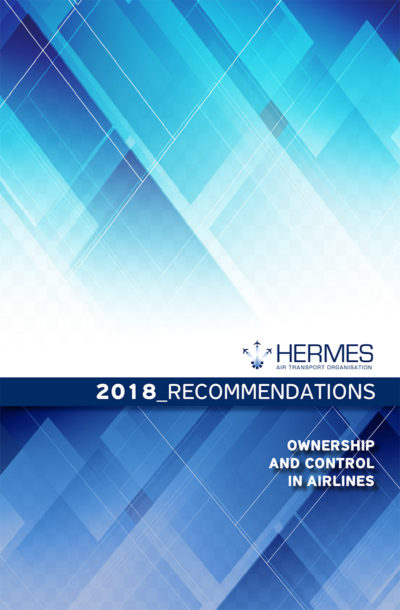Air transport promotes freedom of movement and brings people closer together. Yet the providers of this freedom, the airlines, operate in a cage of regulatory complexities second to no other international industry. One of these complexities is the “ownership and control clause” found in international air services agreements and most national (or regional – EU) legislations alike. Ownership and Control (O&C) restrictions, by the way applicable only to airlines and no other part of the aviation value chain (airports, manufacturers etc), have caused airlines some headaches:
First, the restrictions prevent cross-border mergers which are an important component to expansion, consolidation of operations and growth in any other industry. Airlines have had to make do with (awkward) structures of joint ventures and airline groups (even within the EU where O&C has been fully liberalised). These were the only ways to achieve economies of scale and expand networks to better accommodate consumer demands but do not replace or fully realise the potential and benefits of full mergers.
Second, the airline industry is highly cost intensive, characterised by cyclical demands, vulnerability to external shocks, and very low profit margins compared to other industries. These difficulties are aggravated by airlines’ limited access to financing. For some airlines securing capital from foreign investors is vital to their survival. Limiting foreign investment also negatively impacts transfer of know-how to the airline business and may deprive passengers from stronger competition.
Considering all this, why stick to the O&C restrictions? What purpose do they still serve today? And what impact would their removal or liberalisation have on the industry, workers and consumers?
Some of the arguments put forward in favour of maintaining O&C restrictions are: the maintenance of traffic rights under bilateral air service agreements, providing a clear identity and link to a regime of national labour law and safety and security oversight, preventing “abuse” of traffic rights by nationals of States that do not have rights under the governing air services agreement.
The requested position papers will provide a good opportunity to evaluate these arguments as well as the impact of O&C restrictions on changes in the aviation market. For example, an interesting current development is the effort at international level to promote recognition and acceptance of clauses that focus on the principal place of business of airlines rather than their ownership and control. At the same time however, new business models based on reducing operating costs by outsourcing have arguably eroded the notion of principal place of business in the EU. What is the experience in other parts of the world?
Is O&C the only remaining element giving airlines an identity allowing a strong link to safety, security and social oversight? Must the liberalisation of O&C go hand in hand with the creation of a new concept of regulatory control? What would this look like? How can national and international authorities provide the best business environment for airlines while ensuring the highest standards in quality and safety to passengers?

Position papers
- R18-PP_01 Arab Air Carriers Organization – AACO
- R18-PP_02 Airlines Association of Southern Africa – AASA
- R18-PP_03 European Airline Association – ERA
- R18-PP_04 International Air Transport Association – IATA
- R18-PP_05 Airport Council International – ACI
- R18-PP_06 European Civil Aviation Conference – ECAC
- R18-PP_07 Civil Air Navigation Organisation – CANSO
- R18-PP_08 African Airline Association – AFRAA
- R18-PP_09 World Bank
- R18-S Summary
